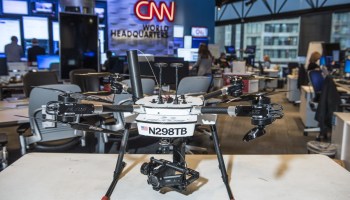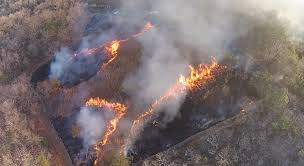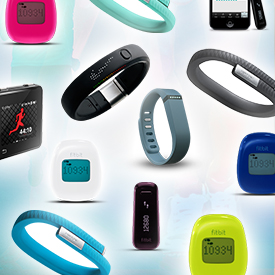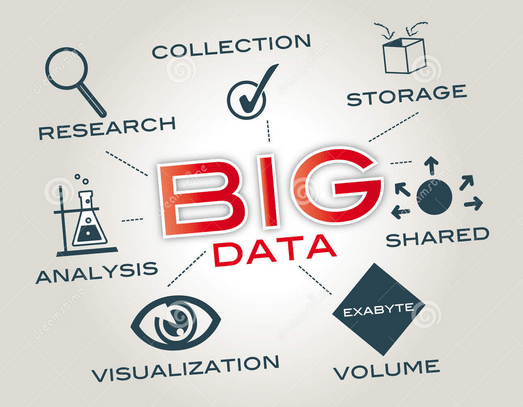
Unmanned Aerial Vehicles (UAVs), commonly known as “drones,” use to be only found in military bases or training camps. However, now, drones are being utilized for so much more, including civilian and commercial use and even in the journalistic settings. Moreover, this technology has been seen as an asset to many different industries and has made life a little easier and sometimes cheaper. For example, it allows for easier and faster medical assistance by giving first responders a bird’s eye view of their surroundings; it could help uncover lost hikers in dense woods that a plane couldn’t provide. It helps photographers capture images of certain areas that are not safe for people, such as explosion sites or places plagued with radiation. It could even take the place of a helicopter during high profile news events such as a missing person report or a high-speed car chases.
With the array of opportunities and versatility drones provide, it is no secret why different industries are interested in adopting this new technological innovation, especially in journalism. While drone development in journalism is becoming a hot debate and even utilized in certain classrooms, it also arises questions of privacy, ethical concerns and what is constitutional.
In The Economist, an article titled “Eyes in the Skies; Drone Journalism,” notes that drones have not only been making news, but it has started gathering it, too. It reports that drones have been used to shoot the most revealing footage of protests and different civil conflicts in places such as Thailand, Venezuela and more. It was used to cover protests in Bangkok back in December, allowing more in-depth coverage without putting reporters’ lives in danger by having them dodge tear gas, water-cannons and violence induced by protests, like before. Moreover, it also helps journalists overcome logistical hurdles, too. Drones have been used to cover fires and floods because it gives viewers a unique, airborne perspective that would be too dangerous to get any other way (Eyes in the Skies, Drone Journalism, 2014).

My own classmate, in my last year of undergrad, utilized drone footage in one of her news gathering projects about the history of Dinky Town by the University of Minnesota-Twin Cities East Bank Campus. She found this technological innovation to be the best device to showcase how much Dinky Town has changed over the years, and without a budge for a helicopter, she was able to use the next best thing, a drone. Watch from 001-06 seconds.
This is just one example of how drones have made its way into the educational setting. According to Maria Marron’s article, “Drones in Journalism Education,” The University of Nebraska-Lincoln and the Missouri School of Journalism are just a few of the schools offering courses that use drones as news gathering tools in journalism. Even journalistic conventions are popping up all over the world to inform, teach, and cater to the use of drones in journalism. For example, News Summer: Hack the Newsroom will feature a session on drones as it promises to look at covering a demonstration from the air, and mapping a conflict or a catastrophe-hit areas. While another convention illuminating visual storytelling will feature a segment on agile systems and responsive designs utilized by drones (Marron, 2013).
While many educational systems are trying to implement drones into their curriculum, some argue that it is hindering the development of any hands on skills journalists receive by shooting and editing video themselves. They note that it is important to develop skills that are complementary to technology rather than ones that can be easily replaced by it, (Marron, 2013).
The worry of this technology replacing the skills of journalists of the past, present and future is not the only critique drones used as a newsgathering tool face. While it does have great potential to help journalists cover disasters, it also makes it easier to keep tabs on celebrities and public figures, unleashing an array of privacy and ethical concerns. While journalists are no stranger to fighting communication laws and privacy laws, new technologies have challenged the way we understand what it means to have a “reasonable expectation of privacy, (Wolfgang, 2013, pg 21) especially as privacy changes all the time with technology. The basic rule is that an individual cannot use technology to peer into a place where a person should feel safe in letting their guard down and not expect to be recorded, such as at home.
Moreover, in Kathleen Culver’s article, “From Battlefield to Newsroom: Ethical Implications of Technology in Journalism,” she notes that there are four common ethical concerns that appear the most when professionals and scholars talk about drones being used in the journalistic setting: safety, accuracy and context, privacy, and conflict of interest. Safety is the first and immediate consideration when focusing on journalists flying drones, as they must first and foremost look out for people within the area in which the drones are being flown. Also, it possess many liability risks for the not only UAV companies that face product liability for a malfunctioning device, but also the new station’s and journalists whom operate them as well. If a drone crashes or injures a civilian, the new station and journalist could be sued and lose their job. Moreover, it also poses the ethical questions of whether risks to personal public safety can be rationally justified as a way to gather news content.

Another concern that plagues professionals is accuracy and the context in which the drone footage is used. While drones hold the promise to improve the range of information available on issues dealing with natural disasters, protests, and dangerous situations, it also diminishes the accurate portrayal of specific facts needed and required by a reporter to put the facts into context. Utilizing a drone would take away the accuracy and context in which a journalist works. Sure, you can show a photo of a crowd protesting, but you will not have a reporter gathering natural sound bites of people expressing different viewpoints, which takes a way from the holistic purpose of a journalist, be unbiased and cover all sides on an issue. But how can you cover all sides of an issue, if you don’t know what/how people feel because you just used a drone?
Moreover, issues of privacy raised by drones provide the greatest entanglement of law and ethics. While journalists main function is to be a watchdog for the people to monitor a corrupt government, access to a drone would provide eyes for both public and private citizens. This arises the questions of “reasonable expectation of privacy,” and while it is off limits to record anyone at home, shared and public spaces becomes a dispute. While journalists often actively cover events, they are seen videotaping and taking pictures, making it easy for a personal to reasonably predict whether her activities were being recorded or not, since they can see where the camera is pointed. However, with a drone in the sky, people may questions whether the drone captured the entire event or solely focused on them, making privacy and ethical issues the biggest altercation of them all.
Finally, the last argument noted when disputing over drones used as a newsgathering tool is the conflict of interest. Journalism organizations and news rooms will need to start and establish guidelines about what information will be shared beyond publication, so its use of drones will not become an unwitting surrogate for governmental authorities such as Homeland Security, Customs, and Border Patrol. News media cannot allow themselves to be used by authorities as a means to circumvent civil liberties of CIA surveillance and spying, especially those government entities that are barred rom conducting their won surveillance. They will turn to news media as a remedy and surrogate opening an array of ethical issues and conflicts of interest (Culver, 2014).

While drones can be used to save the lives of journalists, cover natural disasters and events that are just too dangerous for journalists, they also pose a great risk to public safety, security and privacy. However, journalism organizations are exploring ways to apply existing ethic codes to this new technological innovation in hopes to try and figure out a solution. While many education systems are incorporating drones into their curriculum, it is no secret that this innovation will soon make its way to newsrooms all around the world. It is a cheaper and a safer alternative than the use of helicopters and putting the lives of journalists at risk. However, while many question the ethical implications attached the use of drones, some are figuring out ways to reach an accord.
Culver, Kathleen. “From Battlefield to Newsroom: Ethical Impliations of Drone Technology in Journalism.” 16 Jan. 2014. Vol 29. Journal of Mass Media Ethics.
“Eyes in the Skies; Drone Journalism.” The Economist. 29 Mar. 2014, p. 64(US). Educators Reference.
Marron. B Maria. “Drones in Journalism.” 01 May 2013. Vol 68 Issue 2, p 95-98. Journalism & Mass Communication Educator.
Wolfgang, D. “Droning On.” Quill[serial online]. March 2013: 101(2):18-24. Communications & Mass Media Complete.

